Unlock the power of intelligent web applications with our comprehensive guide to machine learning integration
The digital landscape is experiencing an unprecedented transformation. Machine learning integration has evolved from a luxury feature to an essential component of modern web development. In 2025, websites that harness AI capabilities are not just competing—they’re dominating user engagement and conversion rates.
Recent industry data reveals that websites implementing machine learning features see an average of 35% increase in user engagement and 28% improvement in conversion rates. This comprehensive guide will walk you through the entire process of integrating machine learning into your website, from concept to deployment.
What is Machine Learning Website Integration?
Machine learning website integration refers to the seamless incorporation of AI-powered models and algorithms into web applications to enhance user experience, automate decision-making, and provide intelligent features. This integration transforms static websites into dynamic, responsive platforms that learn from user behavior and adapt accordingly.
The integration process involves deploying trained ML models through various frameworks and APIs, enabling real-time predictions, personalization, and automated responses. Modern integration techniques leverage browser-based ML libraries, cloud services, and edge computing to deliver intelligent features without compromising performance.
Core Components of ML Integration
| Component | Purpose | Examples |
| Frontend ML | Client-side processing | TensorFlow.js, ML5.js |
| Backend APIs | Server-side model serving | Flask, FastAPI, Django |
| Cloud Services | Managed ML platforms | AWS SageMaker, Google AI Platform |
| Edge Computing | Local processing | WebAssembly, Edge ML |
Benefits of ML Integration for Websites
1. Enhanced User Experience
Machine learning enables websites to deliver personalized content recommendations, intelligent search functionality, and adaptive user interfaces. These features create more engaging experiences that keep visitors on your site longer and encourage return visits.
Netflix’s recommendation engine, for instance, drives 80% of viewer engagement through ML-powered content suggestions. Similarly, e-commerce platforms using ML-driven product recommendations see conversion rate improvements of up to 915%.
2. Automated Business Intelligence
“Machine learning allows your website to understand and respond to user behaviors in a smarter, more automated way.” – Industry Research
Automated analytics provide real-time insights into user behavior patterns, enabling data-driven decision making. Predictive analytics can forecast user actions, optimize pricing strategies, and identify potential churn before it happens.
3. Operational Efficiency
✅ Automated customer support through intelligent chatbots
✅ Content moderation using natural language processing
✅ Dynamic pricing based on demand patterns
✅ Fraud detection in real-time transactions
✅ Quality assurance through automated testing
Choosing the Right ML Framework

Frontend Frameworks
TensorFlow.js leads the frontend ML space with comprehensive browser support and extensive model zoo. It enables direct model execution in browsers without server dependencies, making it ideal for privacy-conscious applications and offline functionality.
ML5.js offers a more accessible approach, providing simplified APIs for common ML tasks like image classification and pose detection. It’s particularly suitable for creative applications and rapid prototyping.
Backend Frameworks
| Framework | Best For | Learning Curve | Performance |
| Flask | Rapid prototyping | Easy | Good |
| FastAPI | Production APIs | Medium | Excellent |
| Django | Full-stack applications | Medium | Good |
| Node.js | JavaScript ecosystems | Easy | Good |
Cloud-Based Solutions
Cloud platforms offer managed ML services that significantly reduce deployment complexity. AWS SageMaker, Google AI Platform, and Azure ML provide end-to-end ML workflows with automatic scaling and maintenance.
These platforms handle infrastructure management, allowing developers to focus on model development and integration logic rather than server configuration and maintenance.
Learn about: Complete AWS Bedrock for production
Step-by-Step Integration Process
Phase 1: Planning and Preparation
Before diving into implementation, establish clear objectives for your ML integration. Define specific use cases, success metrics, and technical requirements. This planning phase prevents scope creep and ensures alignment with business goals.
Conduct a technical audit of your existing website infrastructure. Assess server capabilities, database performance, and frontend frameworks to determine the best integration approach.
Pre-Integration Checklist:
- [ ] Define ML use cases and success metrics
- [ ] Assess current infrastructure capabilities
- [ ] Choose appropriate ML framework
- [ ] Plan data collection and storage strategy
- [ ] Establish security and privacy protocols
Phase 2: Model Development and Training
Develop your machine learning model using appropriate algorithms for your specific use case. Whether building a recommendation system, image classifier, or natural language processor, ensure your model meets accuracy benchmarks before integration.
Train models using representative datasets and validate performance through cross-validation techniques. Document model specifications, input/output formats, and performance characteristics for seamless integration.
# Example: Training a simple recommendation model
from sklearn.ensemble import RandomForestClassifier
import joblib
# Prepare your dataset
X_train, y_train = load_training_data()
# Train the model
model = RandomForestClassifier(n_estimators=100)
model.fit(X_train, y_train)
# Save the trained model
joblib.dump(model, 'recommendation_model.pkl')Phase 3: API Development
Create robust APIs to serve your ML models. RESTful APIs provide the most flexible integration approach, allowing frontend applications to communicate with ML models through HTTP requests.
Implement proper error handling, input validation, and response formatting. Consider implementing rate limiting and authentication to protect your ML endpoints from abuse.
# Flask API example
from flask import Flask, request, jsonify
import joblib
app = Flask(__name__)
model = joblib.load('recommendation_model.pkl')
@app.route('/predict', methods=['POST'])
def predict():
try:
data = request.get_json()
prediction = model.predict([data['features']])
return jsonify({'prediction': prediction.tolist()})
except Exception as e:
return jsonify({'error': str(e)}), 400
if __name__ == '__main__':
app.run(debug=True)Phase 4: Frontend Integration
Integrate ML functionality into your website’s user interface. For TensorFlow.js implementations, load models directly in the browser and handle predictions client-side.
Implement proper loading states and error handling to maintain smooth user experience during ML operations. Consider implementing progressive enhancement to ensure core functionality works even if ML features fail.
// TensorFlow.js integration example
import * as tf from '@tensorflow/tfjs';
async function loadModel() {
const model = await tf.loadLayersModel('/models/my-model.json');
return model;
}
async function makePrediction(inputData) {
const model = await loadModel();
const prediction = model.predict(inputData);
return prediction;
}Phase 5: Testing and Optimization
Conduct comprehensive testing across different devices and browsers. Implement A/B testing to measure the impact of ML features on user engagement and conversion rates.
Monitor performance metrics including prediction accuracy, response times, and resource usage. Optimize models and infrastructure based on real-world usage patterns.
Real-World Implementation Examples

1. E-commerce Product Recommendations
Implement collaborative filtering algorithms to suggest relevant products based on user behavior and purchase history. This system typically increases average order value by 15-25%.
# Collaborative filtering implementation
import pandas as pd
from sklearn.metrics.pairwise import cosine_similarity
def generate_recommendations(user_id, user_item_matrix, num_recommendations=5):
user_similarities = cosine_similarity(user_item_matrix)
user_index = user_item_matrix.index.get_loc(user_id)
similar_users = user_similarities[user_index].argsort()[::-1][1:6]
recommendations = []
for similar_user in similar_users:
user_items = user_item_matrix.iloc[similar_user]
recommendations.extend(user_items[user_items > 0].index.tolist())
return list(set(recommendations))[:num_recommendations]2. Intelligent Chatbot Integration
Deploy natural language processing models to create responsive customer service chatbots. Modern chatbots handle 80% of routine inquiries without human intervention.
Implement sentiment analysis to route complex or frustrated customers to human agents automatically. This approach improves customer satisfaction while reducing support costs.
3. Image Recognition for Content Management
Utilize computer vision models for automatic image tagging, content moderation, and visual search functionality. These features enhance user experience while reducing manual content management overhead.
Best Practices for Security and Performance
Data Privacy and Security
Implement encryption protocols for data transmission and storage. Ensure compliance with GDPR, CCPA, and other relevant privacy regulations. Use data anonymization techniques to protect user privacy while maintaining model effectiveness.
Consider federated learning approaches that train models without centralizing sensitive data. This technique is particularly valuable for applications handling personal or financial information.
Performance Optimization
Model Optimization Techniques:
- [ ] Quantization: Reduce model size by 75% with minimal accuracy loss
- [ ] Pruning: Remove unnecessary neural network connections
- [ ] Knowledge Distillation: Create smaller, faster models from complex ones
- [ ] Caching: Store frequent predictions to reduce computation
Scalability Considerations
Design your ML infrastructure to handle traffic spikes and growing user bases. Implement horizontal scaling through load balancers and containerization using Docker for consistent deployments.
Consider edge computing solutions to reduce latency and server load. Edge ML enables real-time predictions with minimal network overhead.
Common Challenges and Solutions
Challenge 1: Model Accuracy in Production
Production environments often differ significantly from training conditions. Implement continuous monitoring and automated retraining pipelines to maintain model performance over time.
Use shadow testing to evaluate new models against existing ones without affecting user experience. This approach enables safe model updates with minimal risk.
Challenge 2: Integration Complexity
💡 Pro Tip: Start with simple implementations and gradually add complexity. A basic recommendation system provides immediate value while you develop more sophisticated features.
Break complex integrations into smaller, manageable components. Use microservices architecture to isolate ML functionality and enable independent scaling and updates.
Challenge 3: Resource Management
ML models can be computationally intensive. Implement model serving strategies that balance accuracy with performance requirements.
Resource Management Strategies:
| Strategy | Use Case | Benefits | Drawbacks |
| Batch Processing | Non-real-time predictions | Efficient resource usage | Higher latency |
| Real-time Serving | Interactive features | Low latency | Higher resource costs |
| Hybrid Approach | Mixed requirements | Balanced performance | Complex implementation |
Tools and Platforms for Deployment
1. Cloud Deployment Options
Amazon Web Services (AWS) offers comprehensive ML services including SageMaker for model training and deployment, Lambda for serverless functions, and EC2 for custom configurations.
Google Cloud Platform provides AI Platform for managed ML workflows, Cloud Functions for lightweight deployments, and Kubernetes Engine for containerized applications.
Microsoft Azure delivers Machine Learning Studio for visual model development, Functions for serverless computing, and Container Instances for scalable deployments.
2. Open Source Alternatives
Kubernetes enables container orchestration for self-managed ML deployments. This approach provides maximum control over infrastructure while supporting automatic scaling and fault tolerance.
Docker Compose offers simpler deployment options for smaller applications. It’s ideal for development environments and small-scale production deployments.
3. Monitoring and Maintenance Tools
Implement MLOps pipelines using tools like MLflow, Kubeflow, or Azure DevOps. These platforms automate model deployment, monitoring, and retraining processes.
Use application performance monitoring (APM) tools to track model performance, response times, and error rates in real-time.
Read more: Best AI development tools
Future-Proofing Your ML Integration
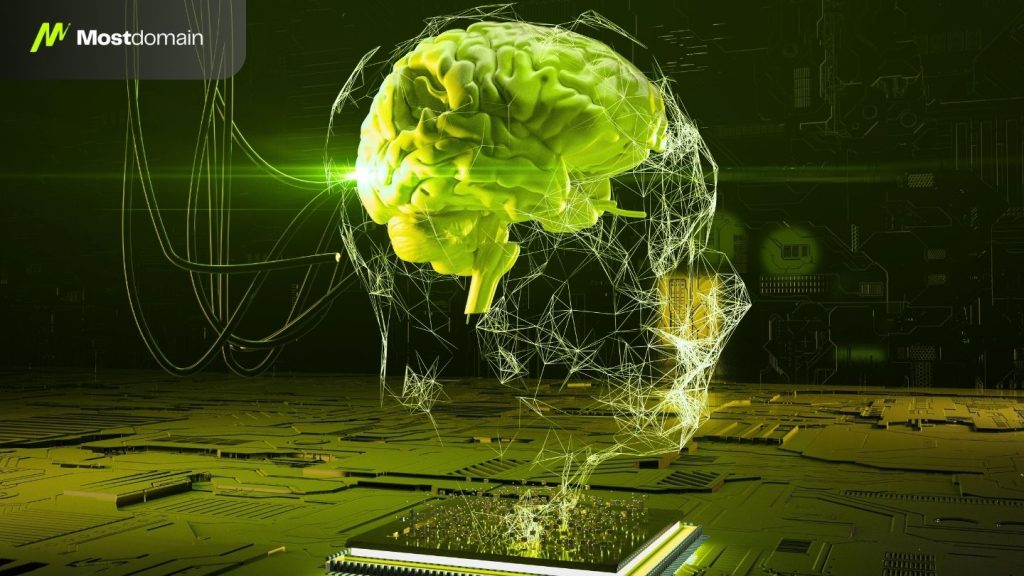
1. Emerging Technologies
Edge AI is transforming how we deploy ML models. Browser-based inference using WebAssembly enables sophisticated AI features without server dependencies.
Quantum machine learning promises exponential performance improvements for specific problem types. While still emerging, early preparation positions websites for future advantages.
2. Sustainability Considerations
Green AI practices reduce computational overhead and environmental impact. Optimize models for efficiency and consider carbon footprint in deployment decisions.
Sustainable ML Practices:
- Choose efficient algorithms over complex ones when possible
- Implement model compression techniques
- Use renewable energy for ML infrastructure
- Monitor and optimize resource usage continuously
Taking Your Website to the Next Level
Machine learning integration represents a paradigm shift in web development. The websites that embrace these technologies today will lead tomorrow’s digital landscape.
Success requires careful planning, systematic implementation, and continuous optimization. Start with simple implementations and gradually expand capabilities as you gain experience and confidence.
The investment in ML integration pays dividends through improved user engagement, operational efficiency, and competitive advantage. Your users will appreciate the intelligent features, and your business will benefit from data-driven insights and automation.
Remember that ML integration is not a one-time project but an ongoing journey of improvement and optimization. Stay current with emerging technologies and best practices to maintain your competitive edge in the evolving digital landscape.
References
- Unicorn Platform – The Future of Machine Learning in Web Development
- WeSoftYou – How to Integrate Machine Learning in Software Development
- Bolaji Ayodeji – How to Deploy a Machine Learning Model to the Web
- DEV Community – Artificial Intelligence and Machine Learning in Web Development
- GeeksProgramming – Exploring Machine Learning In Web Development
- KDnuggets – Build a Machine Learning Web App in 5 Minutes
- Analytics Vidhya – How to Integrate Machine Learning into Web Applications with Flask
- Soshace – Learn how to deploy an ML model to the web
- Analytics Insight – How To Integrate ML Model into Your Website
- ProjectPro – Machine Learning Model Deployment: A Beginner’s Guide




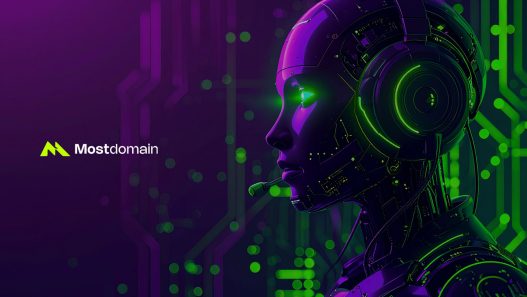









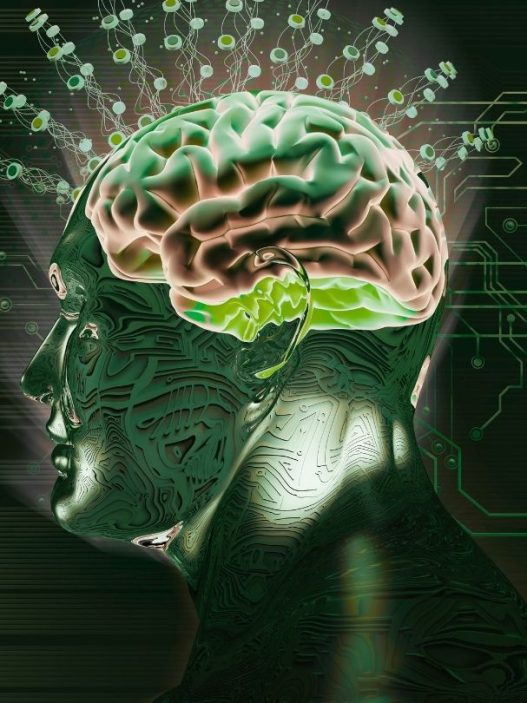


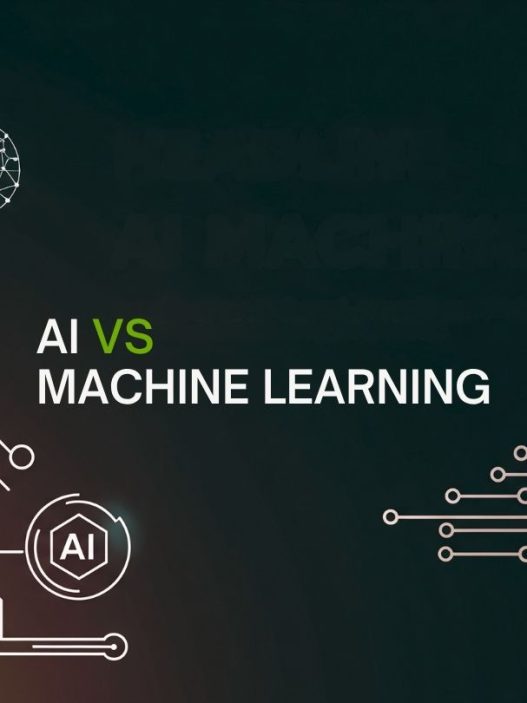
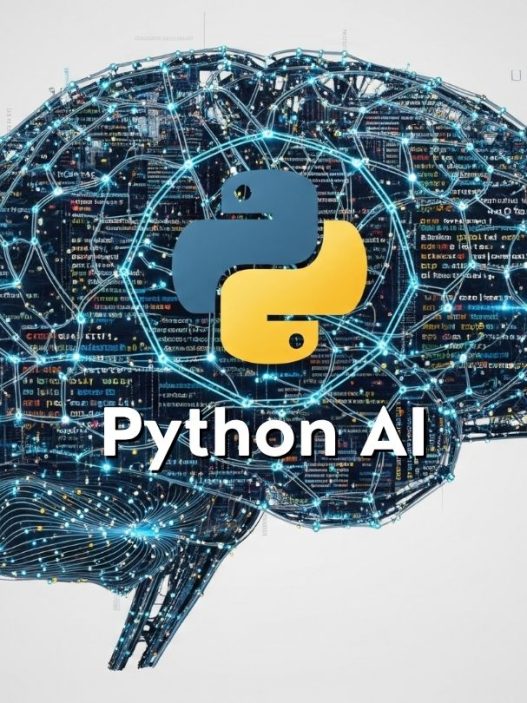
![AI Chatbot: Best Platforms, Implementation & Use Cases [2025]](https://mostdomain.net/wp-content/uploads/2025/08/AI-Chatbot-mostdomain.net_-527x703.jpg)